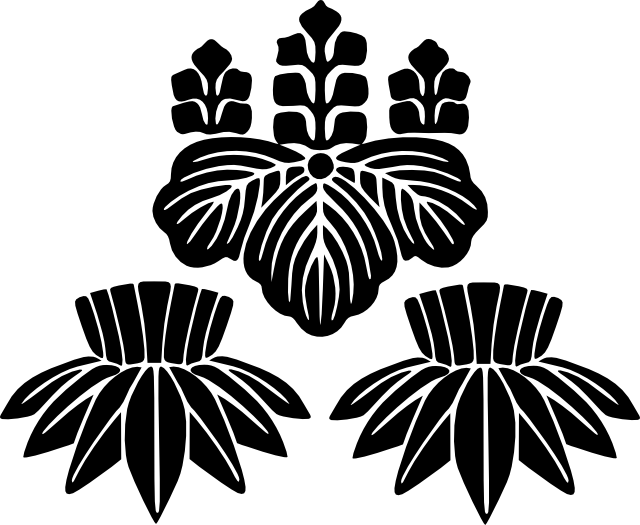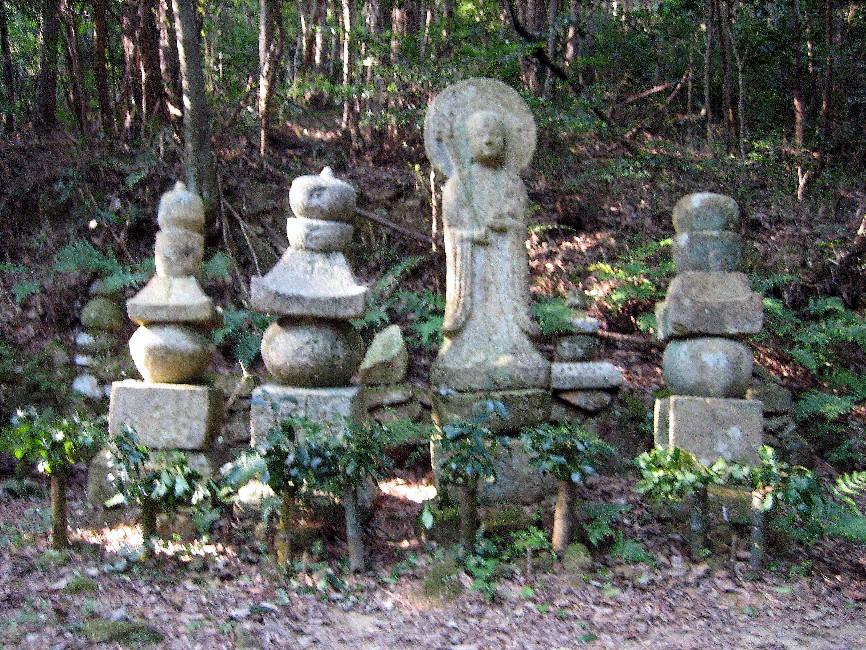|
Daimyo
were powerful Japanese magnates, feudal lords who, from the 10th century to the early Meiji period in the middle 19th century, ruled most of Japan from their vast, hereditary land holdings. They were subordinate to the shogun and nominally to the emperor and the '' kuge''. In the term, means 'large', and stands for , meaning 'private land'. From the ''shugo'' of the Muromachi period through the Sengoku to the ''daimyo'' of the Edo period, the rank had a long and varied history. The backgrounds of ''daimyo'' also varied considerably; while some ''daimyo'' clans, notably the Mōri, Shimazu and Hosokawa, were cadet branches of the Imperial family or were descended from the ''kuge'', other ''daimyo'' were promoted from the ranks of the samurai, notably during the Edo period. ''Daimyo'' often hired samurai to guard their land, and they paid the samurai in land or food as relatively few could afford to pay samurai in money. The ''daimyo'' era ended soon after the Meiji Resto ... [...More Info...] [...Related Items...] OR: [Wikipedia] [Google] [Baidu] |
Hatakeyama Clan
The was a Japanese samurai clan. Originally a branch of the Taira clan and descended from Taira no Takamochi, they fell victim to political intrigue in 1205, when Hatakeyama Shigeyasu, first, and his father Shigetada later were killed in battle by Hōjō forces in Kamakura. After 1205 the Hatakeyama came to be descendants of the Ashikaga clan, who were in turn descended from Emperor Seiwa (850–880) and the Seiwa Genji branch of the Minamoto clan. History The first family being extinct in 1205, Ashikaga Yoshizumi, son of Ashikaga Yoshikane, was chosen by Hōjō Tokimasa to revive the name of Hatakeyama. He married Tokimasa's daughter, the widow of Hatakeyama Shigeyasu (the last Hatakeyama of the first branch), and inherited the domains of the Hatakeyama (1205). Thus the new family descended from the Minamoto (Seiwa Genji). The clan was an ally of the Ashikaga shogunate against the (Imperial) Southern Court during the wars of the Nanboku-chō period, and was rewarded by the sh ... [...More Info...] [...Related Items...] OR: [Wikipedia] [Google] [Baidu] |
Sengoku Period
The was a period in History of Japan, Japanese history of near-constant civil war and social upheaval from 1467 to 1615. The Sengoku period was initiated by the Ōnin War in 1467 which collapsed the Feudalism, feudal system of Japan under the Ashikaga shogunate. Various samurai warlords and Japanese clans, clans fought for control over Japan in the power vacuum, while the emerged to fight against samurai rule. The Nanban trade, arrival of Europeans in 1543 introduced the arquebus into Japanese warfare, and Japan ended its status as a Tributary system of China, tributary state of China in 1549. Oda Nobunaga dissolved the Ashikaga shogunate in 1573 and launched a war of political unification by force, including the Ishiyama Hongan-ji War, until his death in the Honnō-ji Incident in 1582. Nobunaga's successor Toyotomi Hideyoshi completed his campaign to unify Japan and consolidated his rule with numerous influential reforms. Hideyoshi launched the Japanese invasions of Korea (159 ... [...More Info...] [...Related Items...] OR: [Wikipedia] [Google] [Baidu] |
Meiji Restoration
The , referred to at the time as the , and also known as the Meiji Renovation, Revolution, Regeneration, Reform, or Renewal, was a political event that restored practical imperial rule to Japan in 1868 under Emperor Meiji. Although there were ruling emperors before the Meiji Restoration, the events restored practical abilities and consolidated the political system under the Emperor of Japan. The goals of the restored government were expressed by the new emperor in the Charter Oath. The Restoration led to enormous changes in Japan's political and social structure and spanned both the late Edo period (often called the Bakumatsu) and the beginning of the Meiji era, during which time Japan rapidly Industrialisation, industrialized and adopted Western culture, Western ideas and production methods. Foreign influence The Japanese knew they were behind the Western powers when US Commodore (United States), Commodore Matthew C. Perry came to Japan in 1853 in Black Ships, large warshi ... [...More Info...] [...Related Items...] OR: [Wikipedia] [Google] [Baidu] |
Shimazu Clan
The were the ''daimyō'' of the Satsuma han, which spread over Satsuma, Ōsumi and Hyūga provinces in Japan. The Shimazu were identified as one of the '' tozama'' or outsider ''daimyō'' familiesAppert, Georges ''et al.'' (1888). in contrast with the '' fudai'' or insider clans which were hereditary vassals or allies of the Tokugawa clan. History The Shimazu were descendants of the Seiwa Genji branch of the Minamoto. The Shimazu would become one of the families of Edo period ''daimyō'' to have held their territory continuously since the Kamakura period, and would also become, at their peak, the wealthiest and most powerful Tozama daimyō family with an income in excess of 700,000 ''koku''. The founder, Shimazu Tadahisa (d. 1227), was a son of ''Shōgun'' Minamoto no Yoritomo (1147-1199) with the sister of Hiki Yoshikazu. Tadahisa's wife was a daughter of Koremune Hironobu, descendant of the Hata clan, whose name Tadahisa took at first. He received the domain of Shioda i ... [...More Info...] [...Related Items...] OR: [Wikipedia] [Google] [Baidu] |
Edo Period
The or is the period between 1603 and 1867 in the history of Japan, when Japan was under the rule of the Tokugawa shogunate and the country's 300 regional '' daimyo''. Emerging from the chaos of the Sengoku period, the Edo period was characterized by economic growth, strict social order, isolationist foreign policies, a stable population, perpetual peace, and popular enjoyment of arts and culture. The period derives its name from Edo (now Tokyo), where on March 24, 1603, the shogunate was officially established by Tokugawa Ieyasu. The period came to an end with the Meiji Restoration and the Boshin War, which restored imperial rule to Japan. Consolidation of the shogunate The Edo period or Tokugawa period is the period between 1603 and 1867 in the history of Japan, when Japan was under the rule of the Tokugawa shogunate and the country's regional '' daimyo''. A revolution took place from the time of the Kamakura shogunate, which existed with the Tennō's court, to the Tok ... [...More Info...] [...Related Items...] OR: [Wikipedia] [Google] [Baidu] |
Yamana Clan
The was a Japanese samurai clan which was one of the most powerful of the Muromachi period (1336-1467); at its peak, members of the family held the position of Constable (''shugo'') over eleven provinces. Originally from Kōzuke Province, and later centered in Inaba Province, the clan claimed descendance from the Seiwa Genji line, and from Minamoto no Yoshishige in particular. The clan took its name from the village of Yamana in present-day Gunma Prefecture. They were valued retainers under Minamoto no Yoritomo, and counted among his ''gokenin''. The Yamana were among the chief clans in fighting for the establishment of the Ashikaga shogunate, and thus remained valued and powerful under the new government. They were Constables of five provinces in 1363, and eleven a short time later. However, members of the Yamana clan rebelled against the shogunate in the Meitoku Rebellion of 1391 and lost most of their land. Yamana Sōzen (1404 – 1473), likely the most famous member of the ... [...More Info...] [...Related Items...] OR: [Wikipedia] [Google] [Baidu] |
Shiba Clan
was a Japanese clan. Papinot, Jacques Edmond Joseph. (1906). ''Dictionnaire d’histoire et de géographie du Japon''; Papinot, (2003).html" ;"title="DF 58 of 80">("Shiba," ''Nobiliare du Japon'', p. 54 [PDF 58 of 80/nowiki>">DF 58 of 80">("Shiba," ''Nobiliare du Japon'', p. 54 [PDF 58 of 80/nowiki> retrieved 2013-05-03. History The Shiba clan descend from the Ashikaga Yasuuji and the Seiwa-Genji. Shiba Ieuji was the son of Shiba Yasuuji who established the clan name at the end of the 13th century. The Shiba were based in Mutsu Province, which occupied the north of Honshū. The clan also inherited the governorship of Owari Province in present-day Aichi Prefecture. In the Kamakura period, the family was treated as a branch family of Ashikaga, which called themselves the Ashikaga family name, and it was not until the Muromachi period that Shiba was renamed as a family name. Shiba Takatsune (1305–1367) expanded the role of the clan when he sided with Ashikaga Takauji (1305� ... [...More Info...] [...Related Items...] OR: [Wikipedia] [Google] [Baidu] |
Ōuchi Family
Ouchi or Ōuchi may refer to: Geography * Ouchi, Hubei (), a town in Gong'an County, Jingzhou, Hubei, China Japan * Ōuchi, Akita, a town now merged into Yurihonjō, Akita * Ouchi, Saga, a town now merged into Karatsu-city, Saga * Ōuchi-juku, a post station in Japan's Edo period People * Ōuchi clan, powerful and important family in Japan during the reign of the Ashikaga shogunate in the 12th to 14th centuries *, Japanese photographer *Hisashi Ouchi, technician involved in the 1999 Tokaimura nuclear accident *Keigo Ōuchi (1930–2016), Japanese politician *Ōuchi Hyōei was a Japanese economist. Early life and education Ōuchi was born on August 29, 1888 in what is now Minaminawaji, Hyogo, Japan. After graduating from schools in Hyogo and Kumamoto, and earned a degree from Tokyo Imperial University. Career ..., Japanese economist *, Japanese former professional shogi player * William G. Ouchi (born 1943), American professor and author in the field of business manageme ... [...More Info...] [...Related Items...] OR: [Wikipedia] [Google] [Baidu] |
Takeda Clan
The was a Japanese samurai clan active from the late Heian period until the late 16th century. The clan was historically based in Kai Province in present-day Yamanashi Prefecture. The clan reached its greatest influence under the rule of Takeda Shingen, one of the most famous rulers of the period. History Origin The Takeda are descendants of the Emperor Seiwa (858–876), the 56th Emperor of Japan, and are a branch of the Minamoto clan (Seiwa Genji), by Minamoto no Yoshimitsu (1056–1127), son of the '' Chinjufu-shōgun'' Minamoto no Yoriyoshi (988-1075), and brother to the famous Minamoto no Yoshiie (1039–1106). Minamoto no Yoshikiyo (1075–1149), son of Yoshimitsu, was the first to take the name of Takeda, which he took when his father granted him Takeda domain in Hitachi Province; thereafter, he was known as Takeda Yoshikiyo. Kamakura to early Azuchi–Momoyama periods In the 12th century, at the end of the Heian period, the Takeda family-controlled Kai Province. Alon ... [...More Info...] [...Related Items...] OR: [Wikipedia] [Google] [Baidu] |
Akamatsu Clan
is a Japanese samurai family of direct descent from Minamoto no Morifusa of the Murakami-Genji. Papinot, Jacques Edmond Joseph. (1906). ''Dictionnaire d’histoire et de géographie du Japon''; Papinot, (2003)"Akamatsu" at ''Nobiliare du Japon'', p. 1 retrieved 2013-4-11. History They were prominent shugo-daimyō in Harima during the Sengoku period. During the Ōnin no ran (1467–1477), Akamatsu Masanori was one of the chief generals of the Hosokawa clan. The head of the clan at Shizuoka in Suruga Province became a ''kazoku'' baron in 1887.'''' The Shinmen clan were a branch of the Akamatsu.Yoshikawa, Eiji. (1995) ''Musashi,'' p. 94 Select members of the clan * Akamatsu Norimura (1277–1350). Hall, John Whitney. (1999) ''The Cambridge History of Japan: Medieval Japan,'' Vol. 3, pp. 600-603./ref> * Akamatsu Norisuke (1314–1371). * Akamatsu Mitsusuke (1381–1441). Nussbaum, Louis-Frédéric. (2005) "''Kaikitsu-no-hen,''"''Japan encyclopedia,'' p. 456. * Akamatsu Sada ... [...More Info...] [...Related Items...] OR: [Wikipedia] [Google] [Baidu] |




